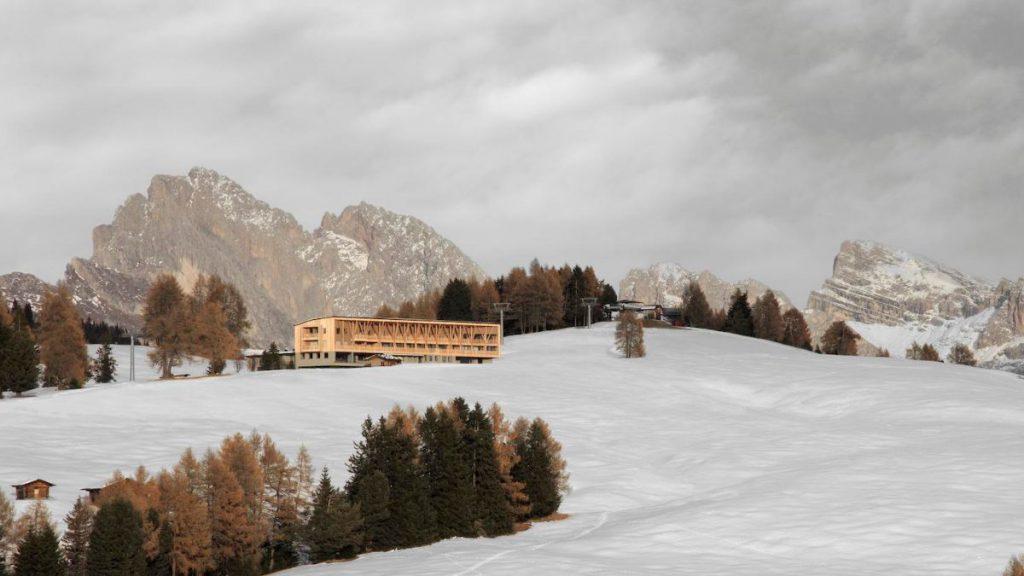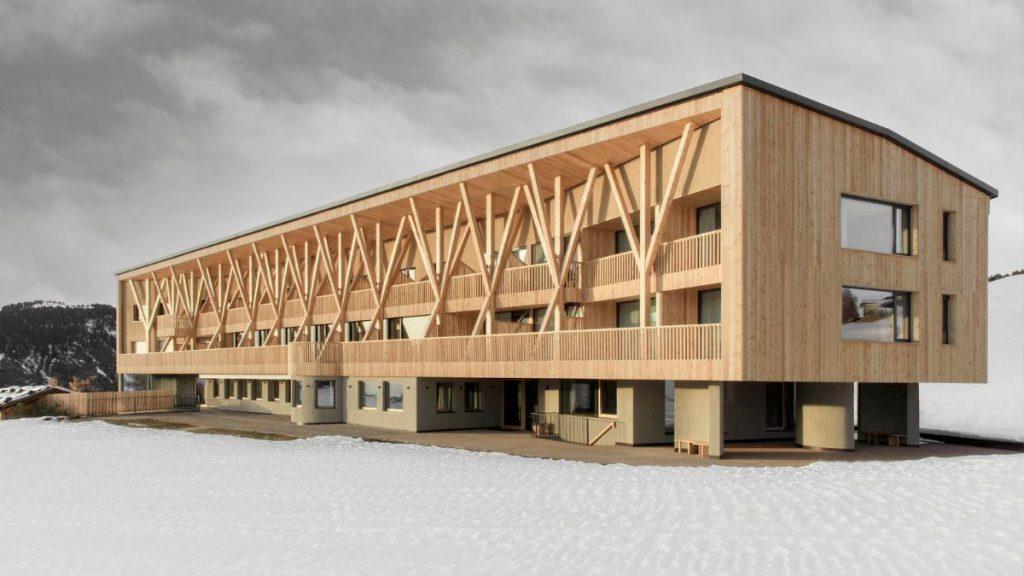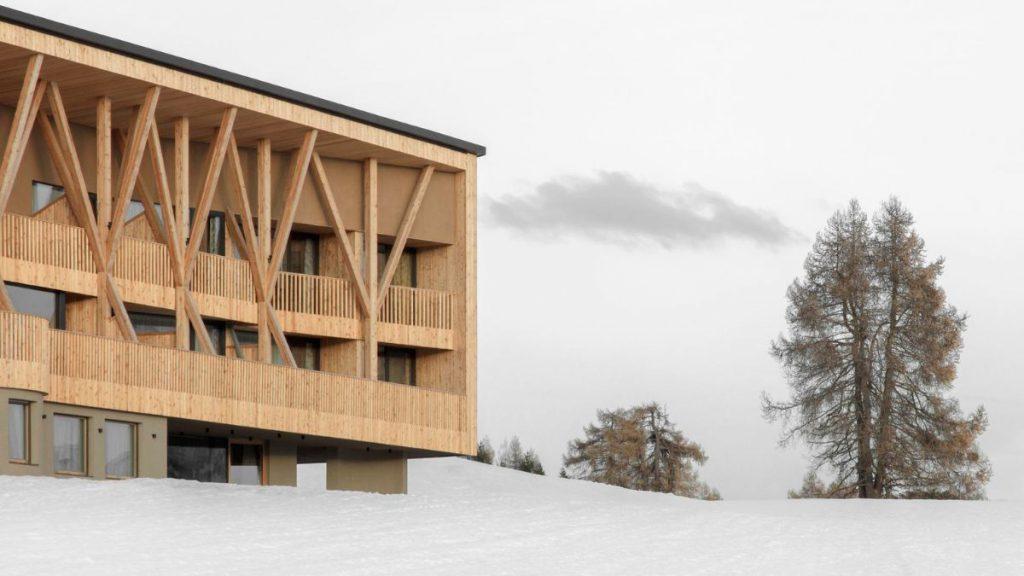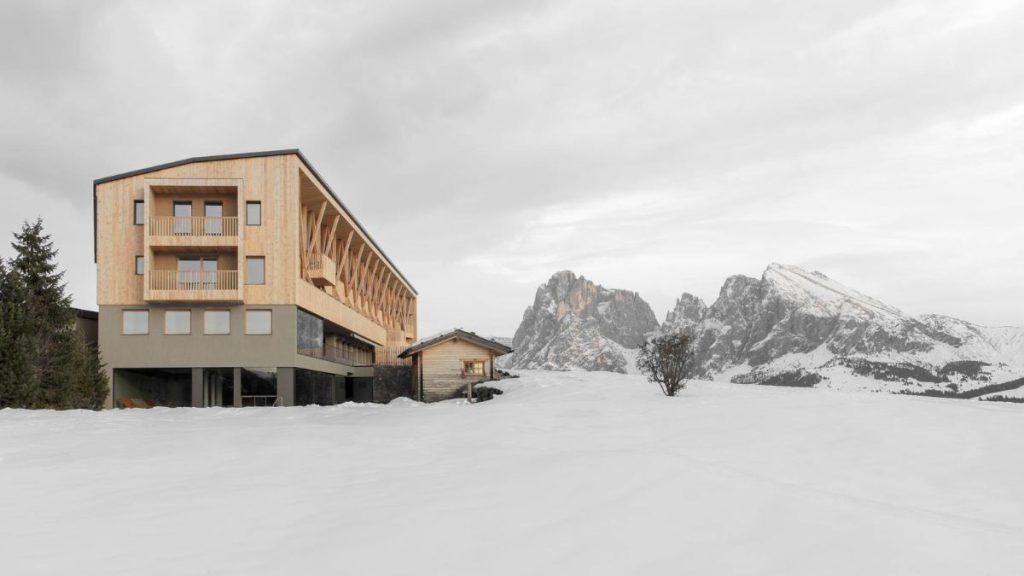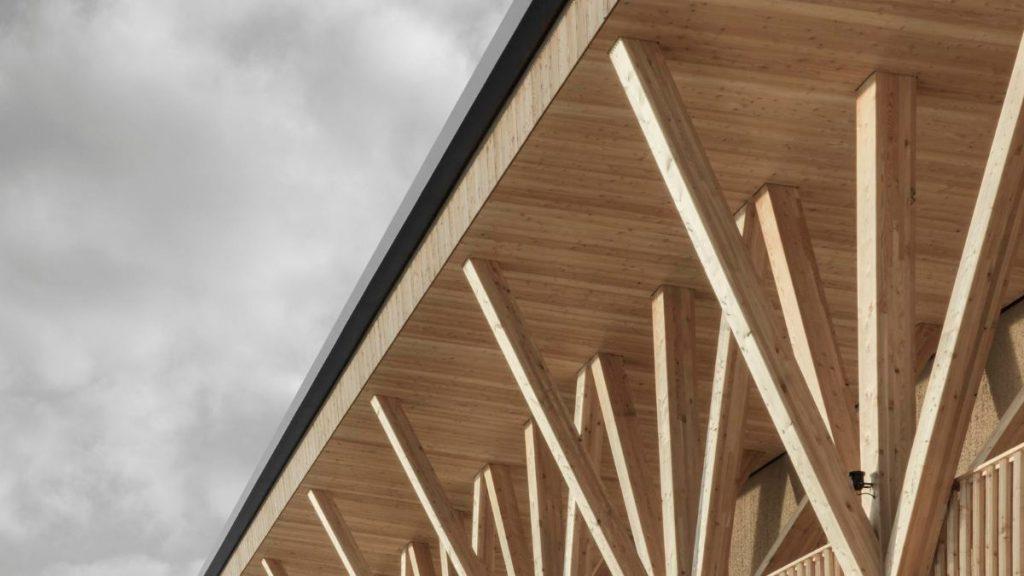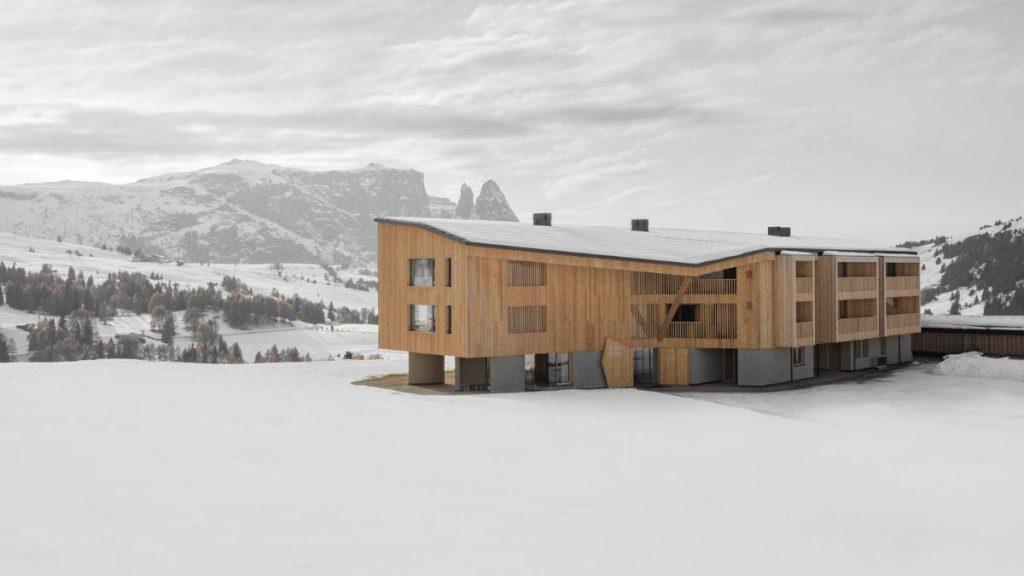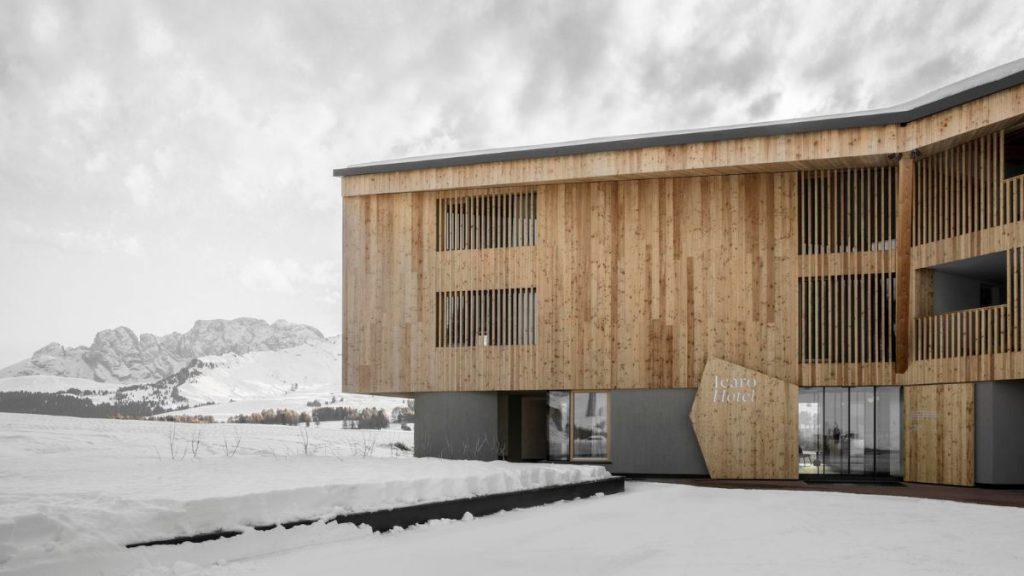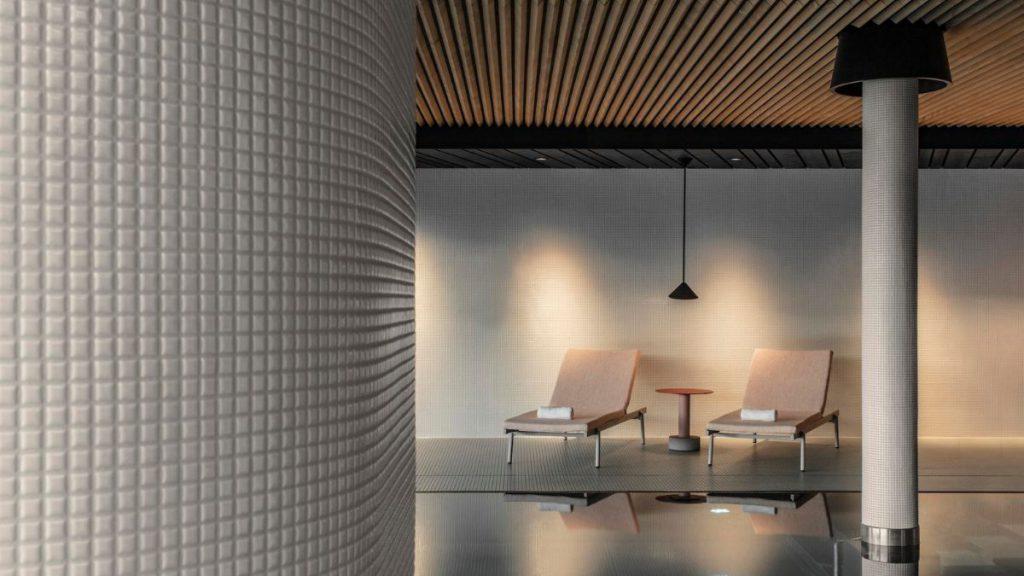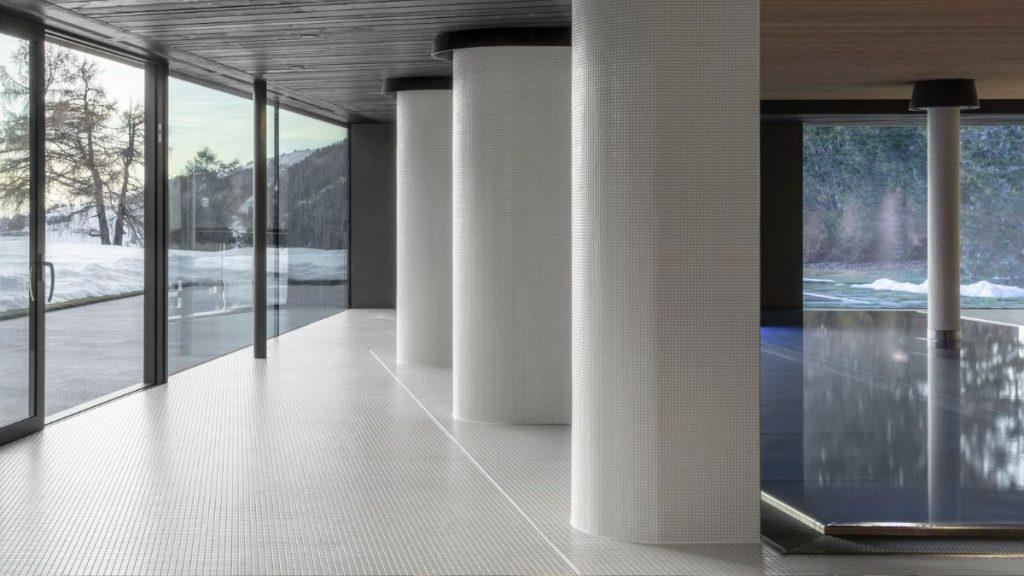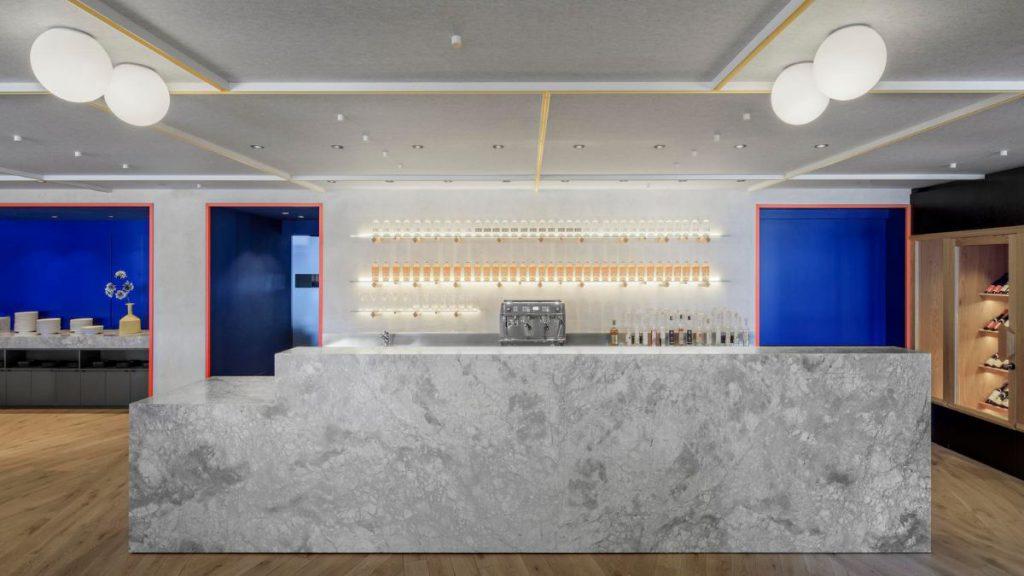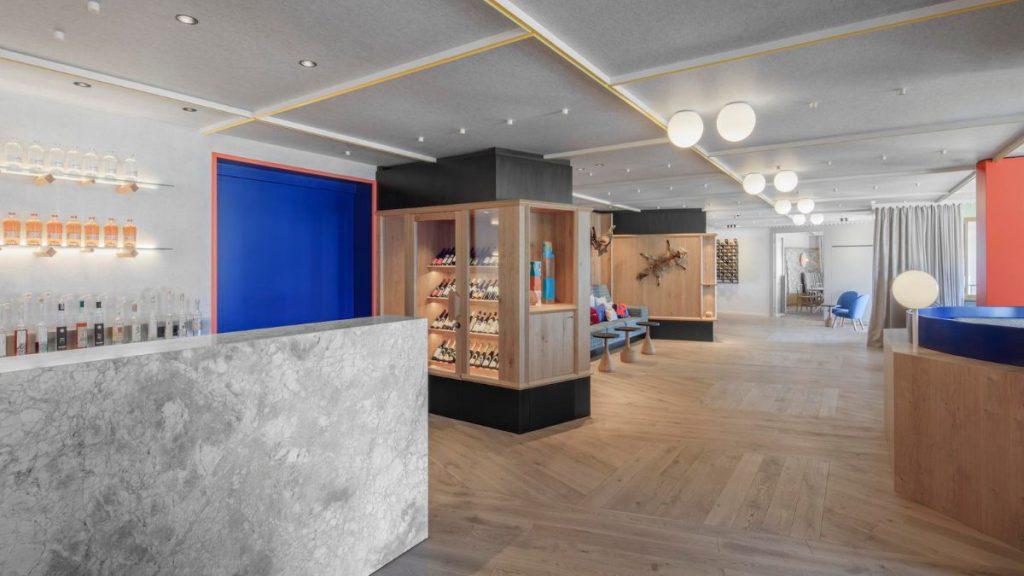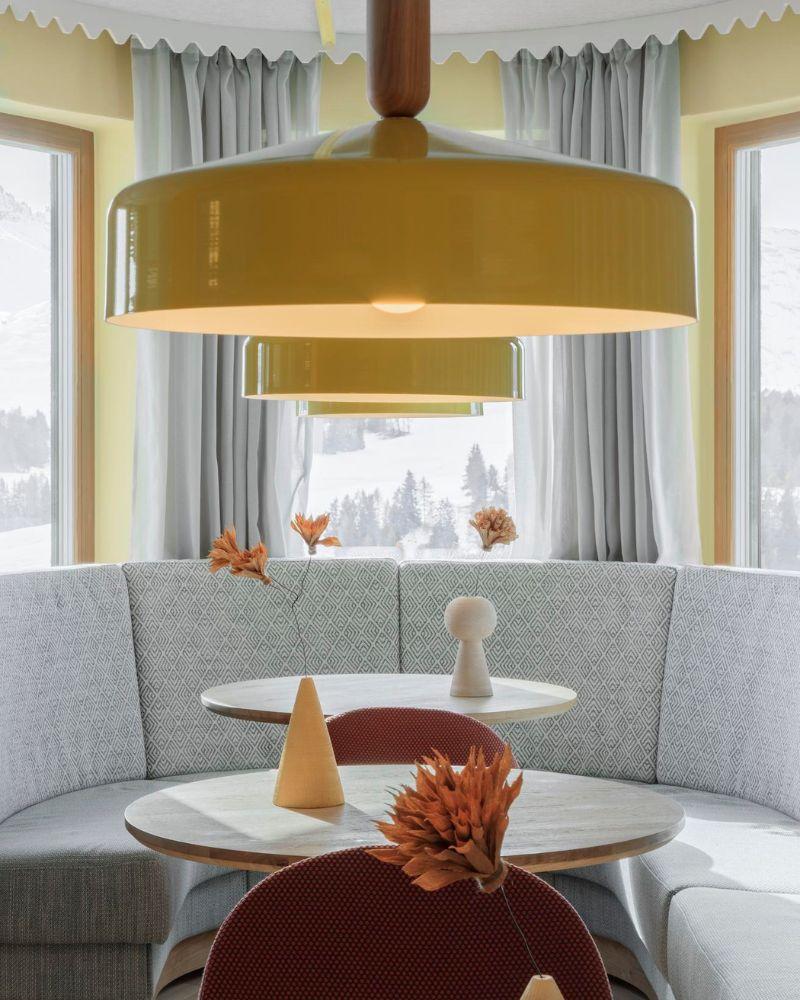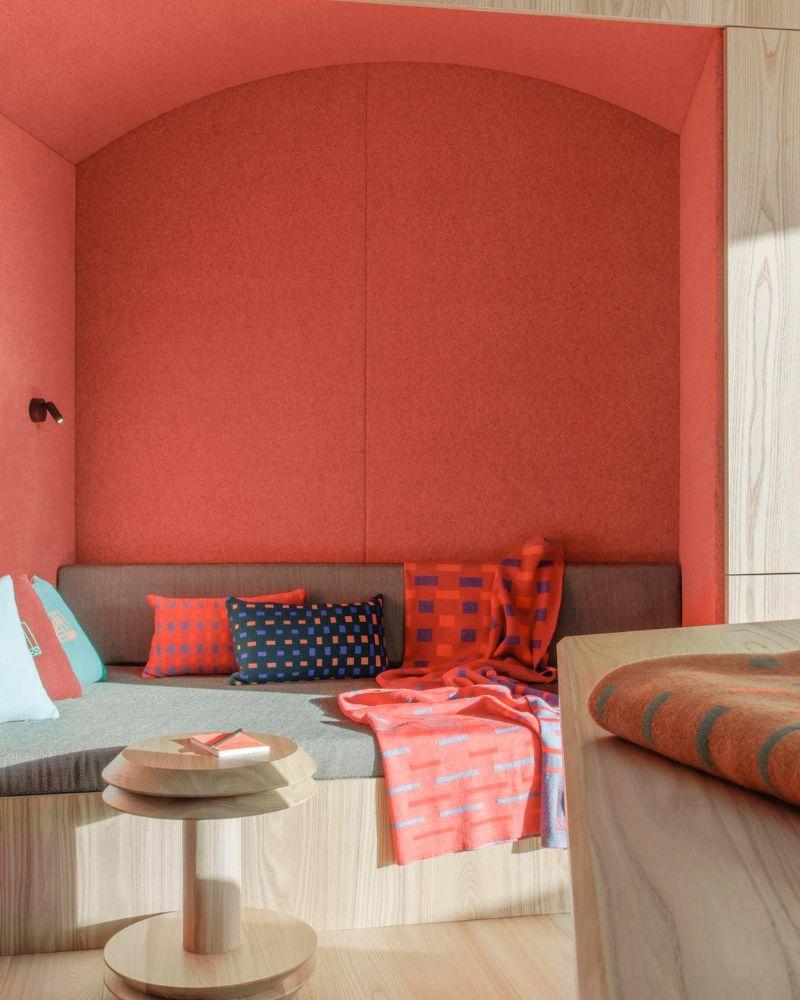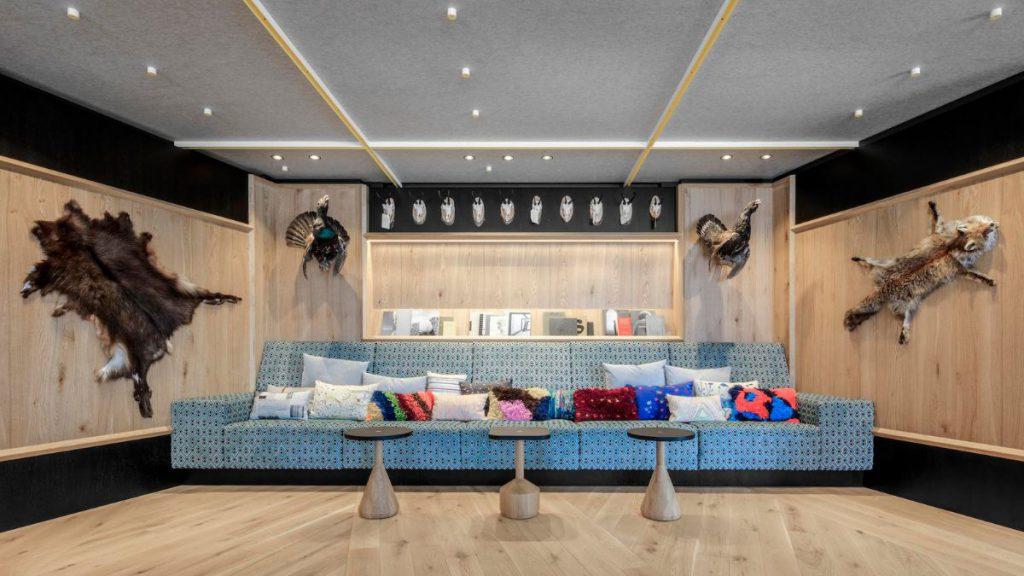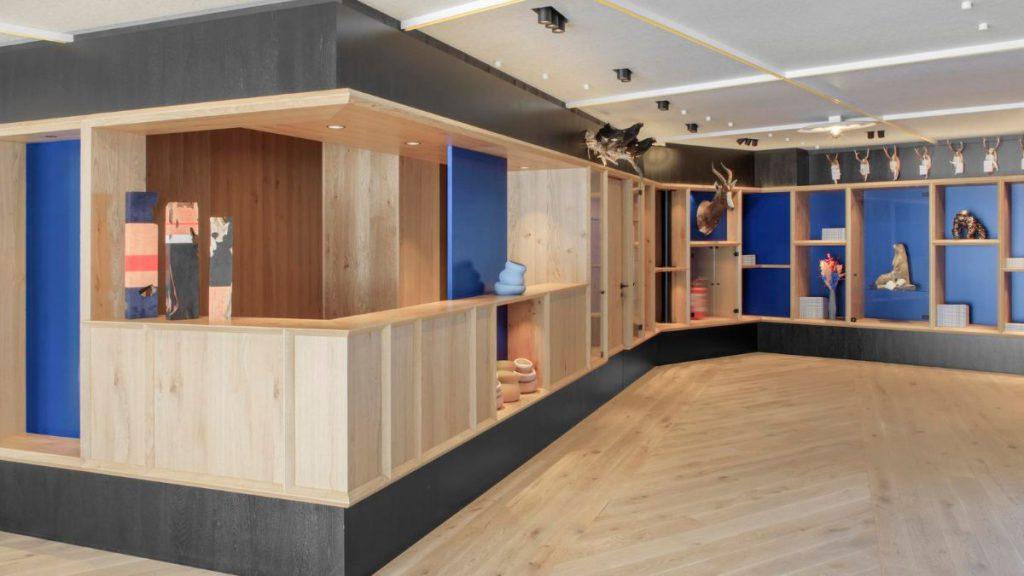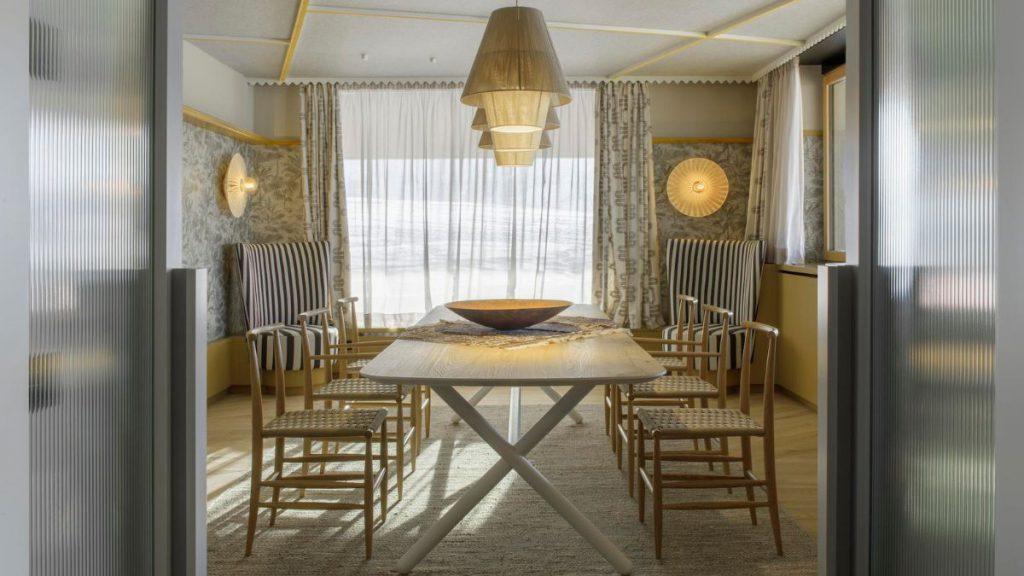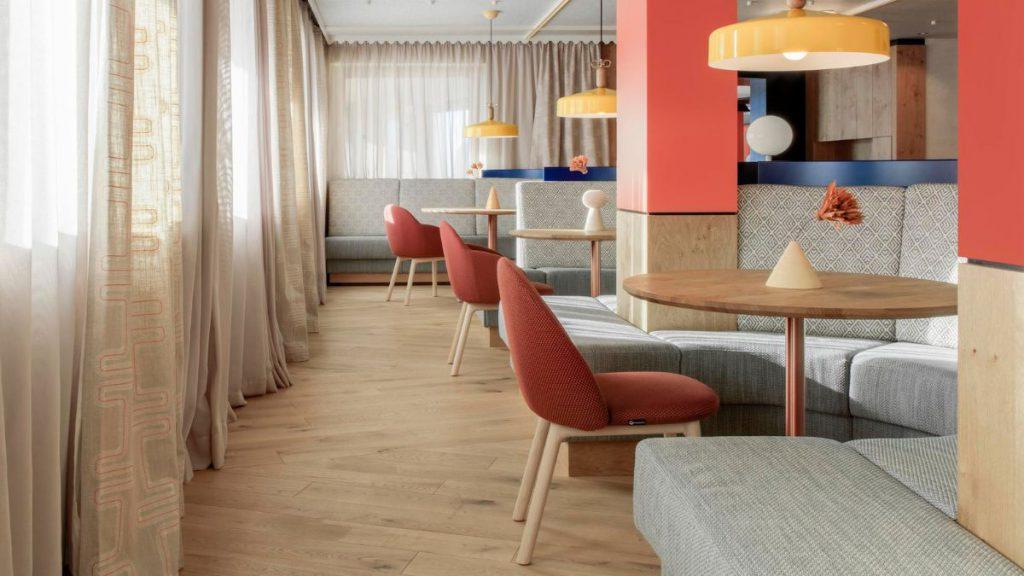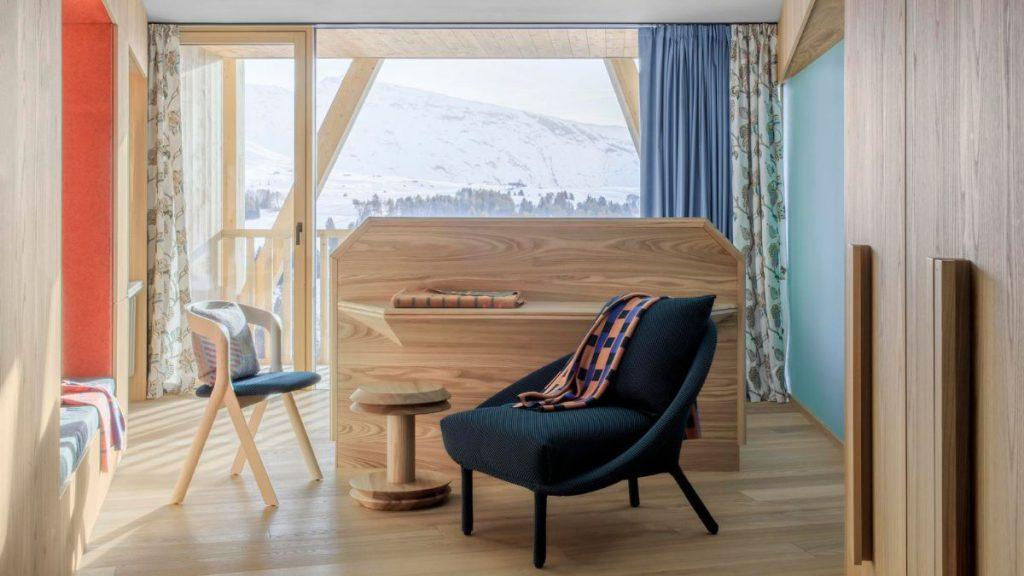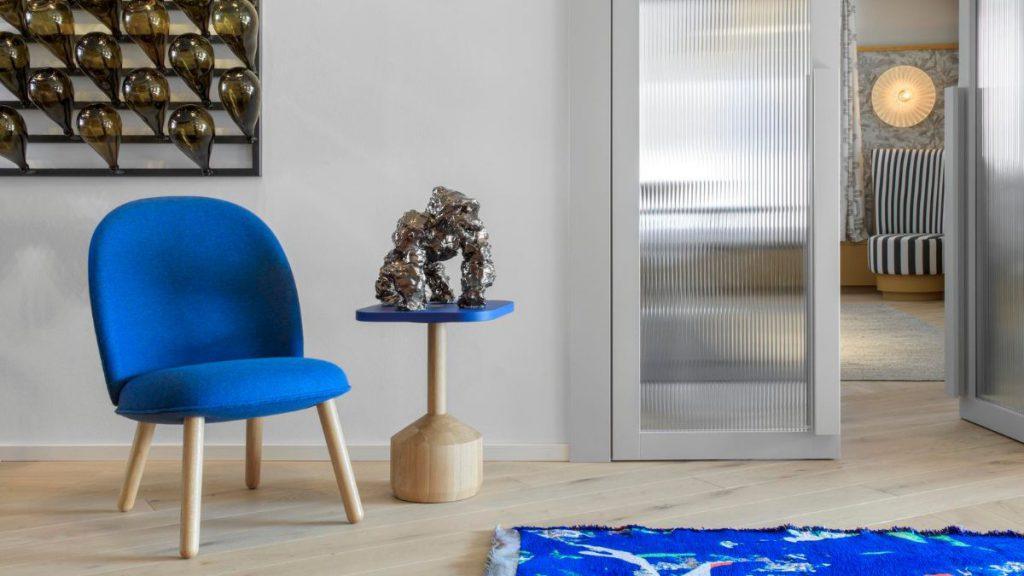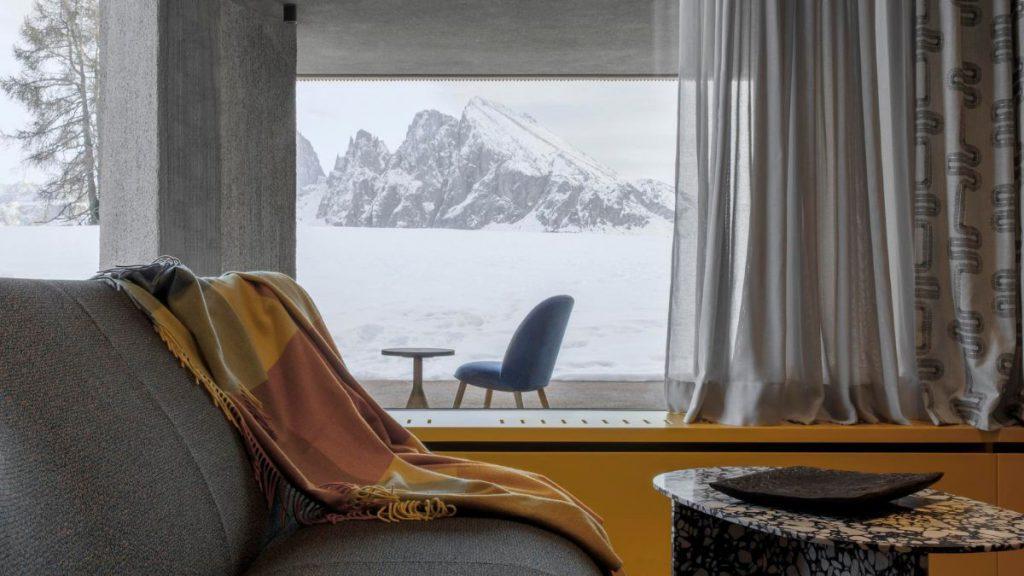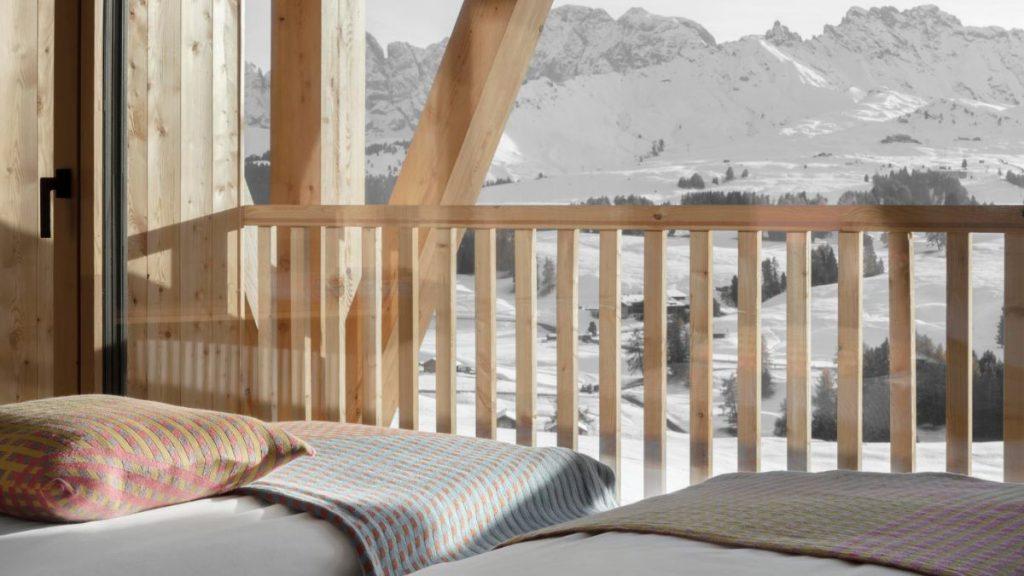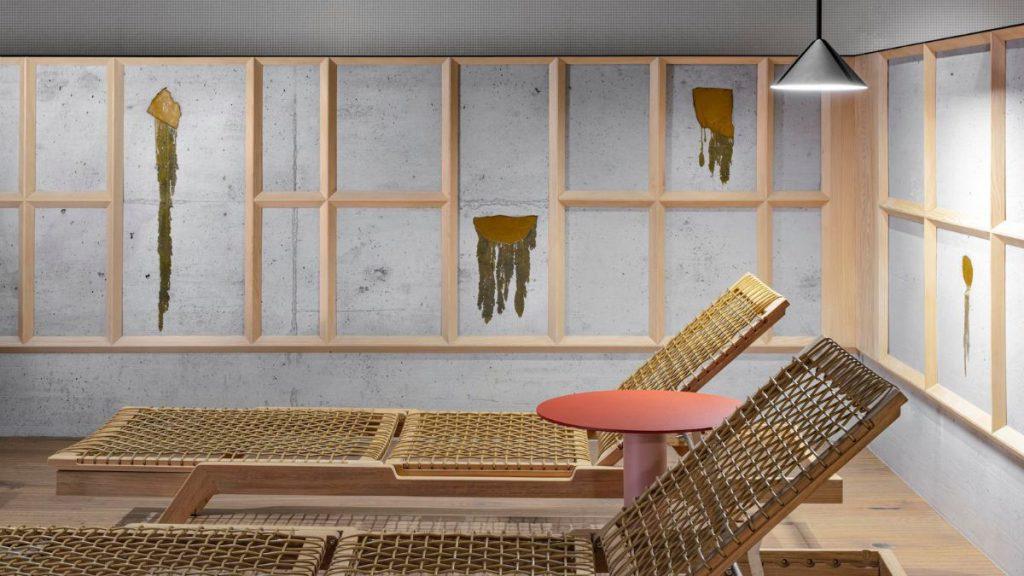Alpine lodges redeveloped
MoDus Architects have restructured a hotel complex that has decades of growth behind it. The external space created by a new layer of timber on the outside of the Icaro Hotel brings together the existing buildings to form a uniform whole. On the inside, guests encounter plenty of affectionate references to Alpine clichés.
South Tyrol, and especially the region at the foot of the Dolomites, is an architectural playground with a myriad of lodges and hotels, some of them centuries old. Many places of accommodation are bursting at the seams and in need of expansion. And quite a few of them have seen better days and could use a complete overhaul. That said, some hotelier families – even the long-established ones – are not only eager to invest, but also open to refreshing, new designs.
Icaro Hotel: Gently remodelled
In fact, it is just the place for architects who want to explore new ideas with their clients without interfering too much with the local identity of the buildings in this region of South Tyrol. A good example is the remodelling of the Icaro Hotel in Kastelruth by MoDus Architects, a studio based in Brixen. And noa*’s redesigning of Aeon is another.
The Italian market town of Kastelruth – Castelrotto in Italian or Ćiastel in Ladin – is located not far from Bolzano. This bilingual German/Ladin area is home to the Seiser Alm (German) – or Mont Sëuc (Ladin), Europe’s largest high-altitude Alpine meadow and a well-known tourist attraction. It would be a great pity if hotel and guesthouse owners were to break with the original architecture. And much of its appeal and flair would surely be lost.
A traditional establishment in its third generation
After being renovated and extended, the long-established Icaro Hotel now combines tradition, art and architecture in one place. It has been owned by the Sattler family for three generations, with Angelika Sattler currently at the helm. When developments in the tourism region prompted a few adjustments, MoDus’s brief was to extend the hotel structure but also to give it a new identity without rebuilding it completely.
The Icaro Hotel first opened in the 1930s as a lodge for hikers and skiers, offering an enviable view of the rugged peaks of the Langkofel and Sciliar. It is situated 1,900 metres above sea level on Seiser Alm plateau in South Tyrol, which is part of the Dolomites UNESCO world heritage site.
The original four-storey building was a single structure divided into two parts, consisting of concrete with wooden panelling and loggias. The numerous dormers built into the sloping timber roof helped to create a traditional Alpine façade.
Nature meets art, architecture and design
In view of the local cultural heritage, the new hotel concept thrives on the constant dialogue between art, architecture, design and nature. Sandy Attia and Matteo Scagnol – the creative forces behind MoDus – had already used the same architectural language in a studio in the centre of Kastelruth belonging to artist Hubert Kostner, the husband of hotel owner Angelika Sattler.
The most important steps taken by MoDus include adding a new building for the hotel staff, the new north wing, a new section in the east with eight additional rooms, and redesigning the communal areas, including the swimming pool, reception and restaurant. They also extended the underground car park, redesigned the roof, and built the giant timber colonnade along the main façade.
From the same mould
MoDus’s solution is based on the original structure: the extension in the east copies the floor plan of the existing wing in the west. The larch wood panelling on the façade and a wooden portico beneath the gabled roof combine to form a uniform architectural framework for the new elements.
The lower storeys were designed with exposed concrete and large windows facing north towards the spa area. The façades on the protruding upper floors have been moved backwards, making way for two outdoor corridors.
On the long main façade in the south, the roof is supported by the colonnade of 13 pillars with a height of 7.5 metres. This solution is still very much in keeping with the Alpine building tradition.
Together, the extension and redesign pack quite a powerful punch. While the monumental timber façade fits perfectly into the surrounding mountain landscape, the interior is like a vibrant explosion of furniture and skilfully mixed and matched colours.
Alpine flair with a twist
On the ground floor, the wood in the dining spaces contrasts with the monolithic, greyish marble of the buffet table and bar counter. The characteristic coffered ceilings of traditional, stove-heated Alpine farmhouses are recreated through acoustic felt panels divided up by intersecting yellow profiles.
The ground floor extends over the entire length of the building. The order of the communal areas is clearly defined: entrance, reception, shop, lounge, bar and dining room.
Family heirlooms, artisan works and other items owned by the family add a folkloric touch to the reception area. They create a connection with the family and its history without being overbearing.
Local artists such as Roland Senonder and Hubert Kostner himself also display their works in the parts of the building open to guests.
Synthesis of comfort and luxury
The new rooms combine the rustic image of an Alpine lodge with the elegant flair of a spa resort. The wood in the interior stands for continuity and tradition.
For instance, these qualities are conveyed by the oak floorboards and wood panelling. The vibrant materials and stylish furniture give the whole ensemble a new look. In fact, the chairs, tables and sofas in the reception and bar almost exude a kind of urban comfort.
Improved energy efficiency
The Icaro’s new design reflects the innate feel of local artisans for materials. And it also shows how they interact with the climate conditions typical of South Tyrol. Involving craftspeople from the region was in keeping with the sustainability concept as well.
Back in 2010, Icaro already had the distinction of being the first climate-neutral hotel in the Dolomites (with EU eco-label). Hotels are traditionally very energy-hungry buildings – with lots of rooms, public areas, a large kitchen, swimming pool and wellness or spa areas… This means that, particularly in Alpine regions like the Seiser Alm, increasing energy efficiency is quite a challenge for architects.
Additional rooms for Icaro Hotel
The new rooms have rather telling names. For instance, guests who book “Telescope” can look forward to a unique view, while the names “Lux” (light) and “Grandangolo” (wide-angle lens) also give a good idea of what to expect.
The legend of Icarus that gives the hotel its name is explored in the artwork on the concrete wall that was cast onsite. Here, embedded melted wax shapes crafted especially for this installation by artist Hubert Kostner are framed by orthogonal wooden profiles. As we know, the son of Daedalus flew up towards the sun on wings made of wax. There are good views to be enjoyed back down on the ground, though. Guests can look into the distance and enjoy superb views of the Sciliar Massif and its stately peaks.
Text: Linda Benkö
Translation: Rosemary Bridger-Lippe
Photos: Gustav Willeit, Icaro Hotel
